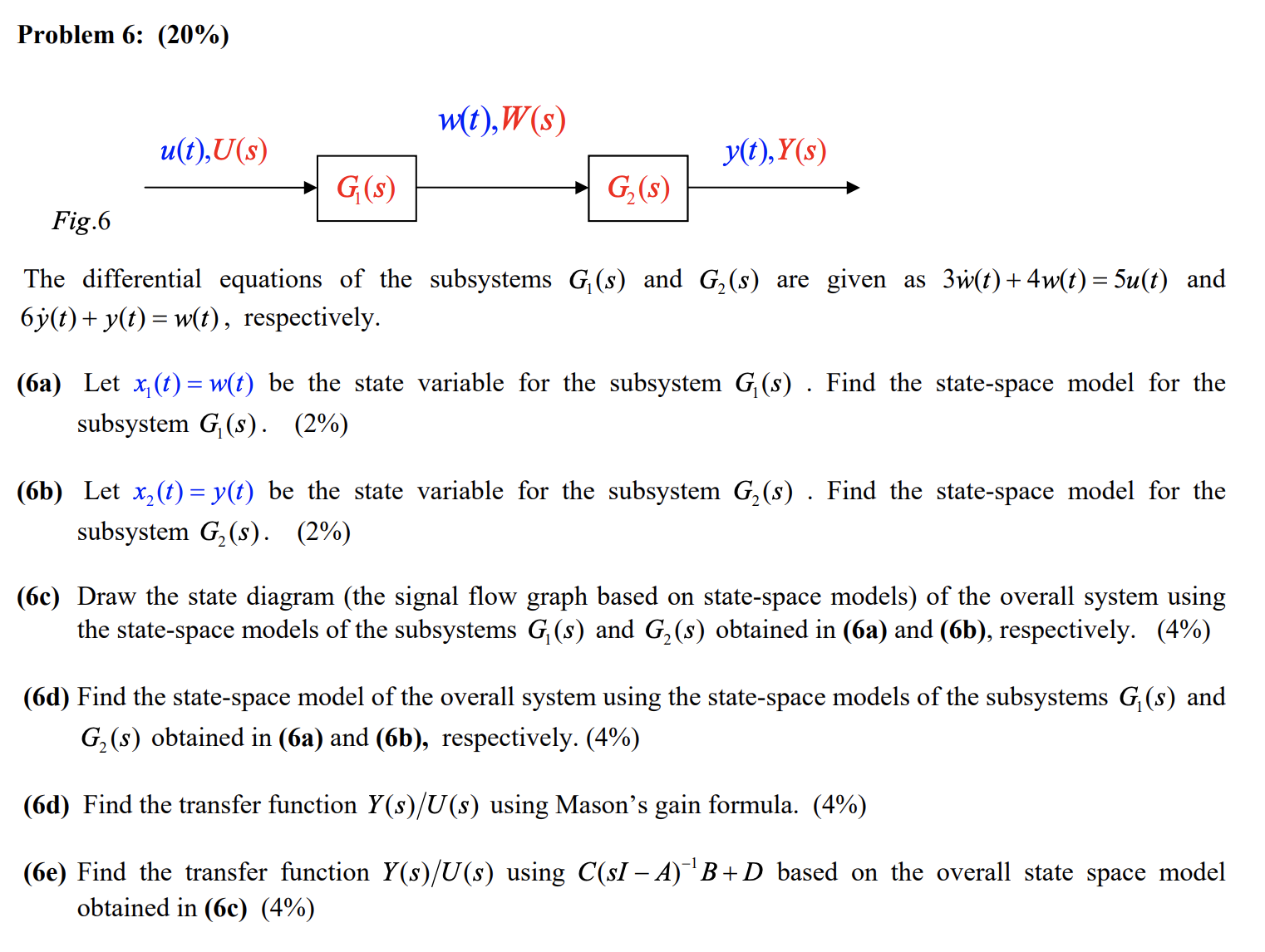Answered step by step
Verified Expert Solution
Question
1 Approved Answer
Problem 6: (20%) w(t),W(s) u(t), U(s) y(t),Y(s) G(s) G(s) Fig.6 The differential equations of the subsystems G(s) and G2(s) are given as 3w(t) +

Problem 6: (20%) w(t),W(s) u(t), U(s) y(t),Y(s) G(s) G(s) Fig.6 The differential equations of the subsystems G(s) and G2(s) are given as 3w(t) + 4w(t) = 5u(t) and 6y(t) + y(t) = w(t), respectively. (6a) Let x(t) = w(t) be the state variable for the subsystem G(s). Find the state-space model for the subsystem G(s). (2%) (6b) Let x2(t) = y(t) be the state variable for the subsystem G2(s). Find the state-space model for the subsystem G(s). (2%) (6c) Draw the state diagram (the signal flow graph based on state-space models) of the overall system using the state-space models of the subsystems G(s) and G(s) obtained in (6a) and (6b), respectively. (4%) (6d) Find the state-space model of the overall system using the state-space models of the subsystems G(s) and G2(s) obtained in (6a) and (6b), respectively. (4%) (6d) Find the transfer function Y(s)/U(s) using Mason's gain formula. (4%) (6e) Find the transfer function Y(s)/U(s) using C(sI - A)B+D based on the overall state space model obtained in (6c) (4%)
Step by Step Solution
There are 3 Steps involved in it
Step: 1

Get Instant Access to Expert-Tailored Solutions
See step-by-step solutions with expert insights and AI powered tools for academic success
Step: 2

Step: 3

Ace Your Homework with AI
Get the answers you need in no time with our AI-driven, step-by-step assistance
Get Started


